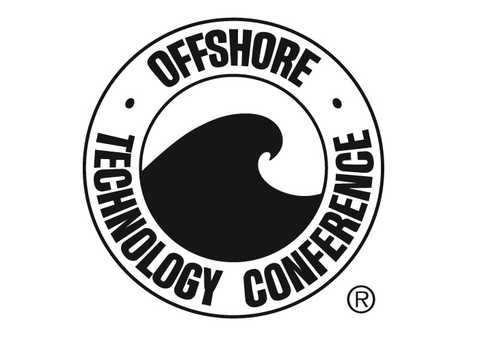
Southwest Research Institute will be exhibiting at the Offshore Technology Conference, booth no. 2739. SwRI provides a multidisciplinary approach to solve difficult technical challenges for the offshore industry and offers a range of R&D, design, and testing services. Specialties include:
- Ocean Engineering & Simulation
- OCTG (Oil Country Tubular Goods) Testing
- Pressure Vessel Design & Fabrication
- Submersible Systems
- Multiphase Flow Testing
- Flow Assurance
- Corrosion Testing
- Fracture Mechanics
SwRI offers independent, premier services to government and industry clients worldwide. Operating as a nonprofit since 1947, we work in the public's best interest and toward the betterment of humanity.
Come see and interact with our demos.
Erosion: Visitors can learn about SwRI’s testing and evaluation capabilities for piping and equipment in erosive flow environments. A variety of components eroded by particle-laden liquid flows will be available for observation. Erosion testing can be performed on small material samples or on full-scale test articles to simulate a wide variety of field conditions including production and fracking. For full-scale articles designed for sand slurry service, the effects of slurry flow can be evaluated by performance testing and validation testing such as those procedures found in API 14A, API 6AV1, API 17G, API 19SS, API 19ICD, & API 19V. In addition to validation testing, precise material removal measurements can be determined by performing analysis using sample weights, observing surface molds, analyzing backlit photo microscopy, and performing 3-D surface scans or surface profilometry.
High Viscosity Flow Testing: Visitors can learn about SwRI’s High Viscosity Flow Loop (HVFL) which provides real-world operational test data to meet the industry's need to understand flow equipment performance at viscous conditions. The HVFL is a flexible facility that can precisely control fluid viscosity and flow rate to test equipment, allowing the identification of conditions that cause severe performance degradation. The facility's layout follows the recommendations of testing standard HI 3.61 for testing electric submersible pumps (ESPs) but maintains flexibility for other applications. SwRI designed the facility to cater to a viscosity range of 1 to 4,300 cP, which is required for ESP testing. The facility provides controlled, repeatable conditions and an opportunity for well-instrumented assemblies, something not possible in the field.
Guided Wave Simulation: Visitors can experience the process and learn the capabilities of a SwRI-developed guided wave inspection system for storage tanks and pipeline structures. Our latest phased array, magnetostrictive-based, guided wave inspection system will be available at OTC for use on a storage tank bottom from outside the tank for high-resolution imaging of anomalies representing notches, wall thinning, and pinhole flaws. Users can learn about this MsS v5m inspection system as well as the compatible guided wave sensors.
Corrosion and Additive Manufacturing: The demo will be a series of small samples we use to perform stress corrosion cracking/ hydrogen embrittlement evaluations as well as a constant load test cell which is one of the stress corrosion cracking tests we can perform (that we can transport). We can also perform high pressure/high temperature testing up to 650 F / 20,000 psi. Included are metal additive manufactured samples (Ti alloy, Ni alloy, stainless steels) created using a Renishaw Laser Powder Bed Fusion machine. Visitors can handle the test samples to see what sizes of corrosion test samples we deal with.
30” Chamber Model: SwRI has completed the development of a 30-inch chamber rated for 16,500 psig with a quick-acting closure to advance the state of large-bore closure design. The closure system can be quickly and easily operated, incorporates safety interlocks, increases overall fatigue life, and optimizes available closure penetrations.
An operating pressure of 16,500 PSIG was chosen to allow for testing of larger components to a pressure equivalent to full ocean depth. A rook-style closure system uses a retainer ring that will be manually rotated only 22.5° to achieve alignment. Once closed, the first stage of an interlock is engaged to lock in proper alignment then the second stage engaged to affect a final seal. This interlock ensures primary pressure boundary components are in the correct position before allowing pressurization. The chamber and closure were designed in accordance with ASME Boiler and Pressure Vessel Code (BPVC) Part KD-4 of Section VIII, Division 3 requirements. The geometry was optimized to increase fatigue life based upon a typical distribution of cycles at various pressures. Ultimately, the first calculated, required inspection is more than 23 years after entering service. However, the existing fitness-for-service program will require inspections much sooner.
This display version is a 11:1 scale model. The real chamber just completed the main body weld and is set for final machining.
Beam and Controls: This demonstration will offer visitors a small sample of SwRI test engineer’s capabilities with regards to testing and monitoring of real-time data. This three-point bend setup will display load and displacement data live based on a sinusoidal input function as well as surface strain experienced by an aluminum beam. With sufficient analysis, damage (with respect to fatigue or remaining life) can be computed and provide feedback to the system operator while performing test functions to assess acceptance criteria, determine go/no-go status, or simply find out how much test time remains. Control system features can be scaled to high-channel count or multi-member systems.
For more information, please contact Chris Storey.
